|

USDA’s Farm Service Agency (FSA) is encouraging producers to contact their local USDA Service Centers to make or change elections and to enroll for 2022 Agriculture Risk Coverage (ARC) and Price Loss Coverage (PLC) programs, providing future protections against market fluctuations. The election and enrollment period opened on Oct. 18, 2021 and runs through March 15, 2022.
Producers can elect coverage and enroll in ARC-CO or PLC, which are both crop-by-crop, or ARC-IC, which is for the entire farm. Although election changes for 2022 are optional, producers must enroll through a signed contract each year. Also, if a producer has a multi-year contract on the farm and makes an election change for 2022, it will be necessary to sign a new contract.
If an election is not submitted by the deadline of March 15, 2022, the election remains the same as the 2021 election for crops on the farm. Farm owners cannot enroll in either program unless they have a share interest in the farm.
Covered commodities include barley, canola, large and small chickpeas, corn, crambe, flaxseed, grain sorghum, lentils, mustard seed, oats, peanuts, dry peas, rapeseed, long grain rice, medium and short grain rice, safflower seed, seed cotton, sesame, soybeans, sunflower seed, and wheat.
Web-Based Decision Tools
In partnership with USDA, the University of Illinois and Texas A&M University offer web-based decision tools to assist producers in making informed, educated decisions using crop data specific to their respective farming operations. Tools include:
- Gardner-farmdoc Payment Calculator, a tool available through the University of Illinois allows producers to estimate payments for farms and counties for ARC-CO and PLC.
-
ARC and PLC Decision Tool, a tool available through Texas A&M tallows producers to estimate payments and yield updates and expected payments for 2022.
Crop Insurance Considerations
ARC and PLC are part of a broader safety net provided by USDA, which also includes crop insurance and marketing assistance loans.
Producers are reminded that ARC and PLC elections and enrollments can impact eligibility for some crop insurance products.
Producers on farms with a PLC election have the option of purchasing Supplemental Coverage Option (SCO) through their Approved Insurance Provider; however, producers on farms where ARC is the election are ineligible for SCO on their planted acres for that crop on that farm.
Unlike SCO, the Enhanced Coverage Option (ECO) is unaffected by an ARC election. Producers may add ECO regardless of the farm program election.
More Information
For more information on ARC and PLC, visit the ARC and PLC webpage or contact your local USDA Service Center.
|

Producers encouraged to enroll as soon as possible.
USDA has extended the deadline to enroll in Dairy Margin Coverage (DMC) and Supplemental Dairy Margin Coverage (SDMC) for program year 2022. The deadline to apply for 2022 coverage is now March 25, 2022. As part of the Biden-Harris Administration’s ongoing efforts to support dairy farmers and rural communities, USDA’s Farm Service Agency (FSA) opened DMC and SDMC signup in December 2021 to help producers manage economic risk brought on by milk price and feed cost disparities.
Enrollment for 2022 DMC is currently at 55% of the 2021 program year enrollment. Producers who enrolled in DMC for 2021 received margin payments each month, January through November for a total of $1.2 billion, with an average payment of $60,275 per operation.
The DMC program, created by the 2018 Farm Bill, offers reasonably priced protection to dairy producers when the difference between the all-milk price and the average feed cost (the margin) falls below a certain dollar amount selected by the producer.
Supplemental DMC will provide $580 million to better help small- and mid-sized dairy operations that have increased production over the years but were not able to enroll the additional production. Now, they will be able to retroactively receive payments for that supplemental production.
After making any revisions to 2021 DMC contracts for Supplemental DMC, producers can sign up for 2022 coverage. DMC provides eligible dairy producers with risk management coverage that pays producers when the difference between the price of milk and the cost of feed falls below a certain level. So far in 2021, DMC payments have triggered for January through November for more than $1 billion.
For DMC enrollment, producers must certify with FSA that the operation is commercially marketing milk, sign all required forms and pay the $100 administrative fee. The fee is waived for farmers who are considered limited resource, beginning, socially disadvantaged, or a military veteran. To determine the appropriate level of DMC coverage for a specific dairy operation, producers can use the online dairy decision tool.
USDA has also changed the DMC feed cost formula to better reflect the actual cost dairy farmers pay for high-quality alfalfa hay. FSA now calculates payments using 100% premium alfalfa hay rather than 50%. In December 2021, following publication of the new feed cost policy, $102 million was paid to producers as a result of the revised high quality alfalfa feed cost formula.
The amended feed cost formula will make DMC payments more reflective of actual dairy producer expenses and DMC payments. Higher DMC feed cost calculations due to the premium alfalfa adjustment could more frequently trigger DMC indemnity payments for dairy operations having DMC coverage in 2022.
More Information
To learn more or to participate in DMC producers should contact their local USDA Service Center. Service Center staff continue to work with agricultural producers via phone, email and other digital tools. Because of the pandemic, some are open to limited visitors. Producers should contact their Service Center to set up an in-person or phone appointment. Additionally, more information related to USDA’s response and relief for producers can be found at farmers.gov/coronavirus.
|
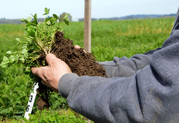
Agricultural producers who have coverage under most crop insurance policies are eligible for a premium benefit from the U.S. Department of Agriculture (USDA) if they planted cover crops during the 2022 crop year. To receive the benefit from this year’s Pandemic Cover Crop Program (PCCP), producers must report cover crop acreage by March 15, 2022.
PCCP, offered by USDA’s Risk Management Agency (RMA), helps farmers maintain their cover crop systems, despite the financial challenges posed by the pandemic and is part of USDA’s Pandemic Assistance for Producers initiative, a bundle of programs to bring financial assistance to farmers, ranchers and producers who felt the impact of COVID-19 market disruptions.
PCCP provides premium support to producers who insured their crop with most insurance policies and planted a qualifying cover crop during the 2022 crop year. The premium support is $5 per acre, but no more than the full premium amount owed.
More on the Pandemic Cover Crop Program
|
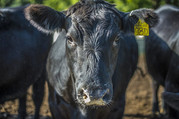
Farmers, ranchers, and other producers and growers now have a one-stop shop to help ensure they are treated fairly. The new farmerfairness.gov portal developed jointly by the U.S. Department of Agriculture (USDA) and Department of Justice (DOJ) allows you to report potential violations of livestock and poultry antitrust laws, including the Packers and Stockyards Act.
Read More
|
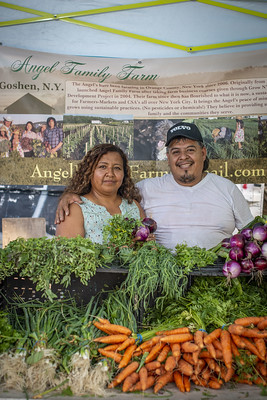
The Farm Loan teams in New York are already working on operating loans for spring 2022 and ask potential borrowers to submit their requests early so they can be timely processed. The farm loan team can help determine which loan programs are best for applicants.
FSA offers a wide range of low-interest loans that can meet the financial needs of any farm operation for just about any purpose. The traditional farm operating and farm ownership loans can help large and small farm operations take advantage of early purchasing discounts for spring inputs as well expenses throughout the year.
Microloans are a simplified loan program that will provide up to $50,000 for both Farm Ownership and Operating Microloans to eligible applicants. These loans, targeted for smaller and non-traditional operations, can be used for operating expenses, starting a new operation, purchasing equipment, and other needs associated with a farming operation. Loans to beginning farmers and members of underserved groups are a priority.
Other types of loans available include:
Marketing Assistance Loans allow producers to use eligible commodities as loan collateral and obtain a 9-month loan while the crop is in storage. These loans provide cash flow to the producer and allow them to market the crop when prices may be more advantageous.
Farm Storage Facility Loans can be used to build permanent structures used to store eligible commodities, for storage and handling trucks, or portable or permanent handling equipment. A variety of structures are eligible under this loan, including bunker silos, grain bins, hay storage structures, and refrigerated structures for vegetables and fruit. A producer may borrow up to $500,000 per loan.
|

Farmers and ranchers rely on crop insurance to protect themselves from disasters and unforeseen events, but not all crops are insurable through the USDA’s Risk Management Agency. The Farm Service Agency’s (FSA) Noninsured Crop Disaster Assistance Program (NAP) provides producers another option to obtain coverage against disaster for these crops. NAP provides financial assistance to producers of non-insured crops impacted by natural disasters that result in lower yields, crop losses, or prevents crop planting.
Commercially produced crops and agricultural commodities for which crop insurance is not available are generally eligible for NAP. Eligible crops include those grown specifically for food, fiber, livestock consumption, biofuel or biobased products, or be commodities such as value loss crops like Christmas trees and ornamental nursery, honey, maple sap, and many others. March 15 is the deadline in New York for most spring planted fruits and vegetables like tomatoes, cucumbers, peppers and more.
Eligible causes of loss include drought, freeze, hail, excessive moisture, excessive wind or hurricanes, earthquake, flood. These events must occur during the NAP policy coverage period, before or during harvest, and the disaster must directly affect the eligible crop. For guidance on causes of loss not listed, contact your local FSA county office.
Interested producers must apply for coverage using FSA form CCC-471, “Application for Coverage,” and pay the applicable service fee at the FSA office where their farm records are maintained. These must be filed by the application closing date. Closing dates vary by crop, so it is important to contact your local FSA office as soon as possible to ensure you don’t miss an application closing date.
At the time of application, each producer will be provided a copy of the NAP Basic Provisions, which describes how NAP works and all the requirements you must follow to maintain NAP coverage. NAP participants must provide accurate annual reports of their production in non-loss years to ensure their NAP coverage is beneficial to their individual operation.
Producers are required to pay service fees which vary depending on the number of crops and number of counties your operation is located in. The NAP service fee is the lesser of $325 per crop or $825 per producer per administrative county, not to exceed a total of $1,950 for a producer with farming interests in multiple counties. Premiums also apply when producers elect higher levels of coverage with a maximum premium of $15,750 per person or legal entity depending on the maximum payment limitation that may apply to the NAP covered producer. The service fee can be waived for beginning, qualifying veteran, and limited resource farmers and rancher., These farmers and ranchers can also receive a 50 percent reduction in the premium.
For more detailed information on NAP, download the NAP Fact Sheet. To get started with NAP, we recommend you contact your local USDA service center.
|
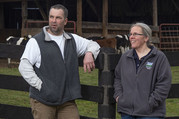
Farm Service Agency (FSA) is committed to providing our farm loan borrowers the tools necessary to be successful. FSA staff will provide guidance and counsel from the loan application process through the borrower’s graduation to commercial credit. While it is FSA’s commitment to advise borrowers as they identify goals and evaluate progress, it is crucial for borrowers to communicate with their farm loan staff when changes occur. It is the borrower’s responsibility to alert FSA to any of the following:
- Any proposed or significant changes in the farming operation
- Any significant changes to family income or expenses
- The development of problem situations
- Any losses or proposed significant changes in security
If a farm loan borrower can’t make payments to suppliers, other creditors, or FSA on time, contact your farm loan staff immediately to discuss loan servicing options.
For more information on FSA farm loan programs, contact your local USDA Service Center or visit fsa.usda.gov.
|
Deadline to Report 2021 Losses and File Application for Payment is Feb. 28, 2022
Farm Service Agency’s (FSA) Livestock Indemnity Program (LIP) provides benefits to eligible livestock owners or contract growers for livestock deaths exceeding normal mortality caused by eligible loss conditions, including eligible adverse weather, eligible disease and attacks by animals reintroduced into the wild by the federal government or protected by federal law, including wolves and avian predators. In addition, LIP assists eligible livestock owners that must sell livestock at a reduced price because of an injury from an eligible loss condition.
Regarding losses due to eligible disease, research indicates that the bacteria M. bovis is transmitted from bison to bison through instances of adverse weather conditions that cause stressors for bison and enhance transmission and symptoms. Once symptomatic, it is nearly impossible to treat M. bovis in bison.
There is no vaccine currently labeled to mitigate the effects of the bacteria in bison which often results in the death of eligible livestock. No acceptable management practices to treat the disease exist for bison that are stricken with M. bovis.
LIP eligibility for M. bovis bison deaths due to eligible adverse weather events are established by FSA State Offices.
The deadline to file a notice of loss and submit a LIP application for payment specifically for M. bovis bison deaths that occurred in 2021 is Feb. 28, 2022. At the time of application, producers should be prepared to provide proof of bison death losses due to M. bovis.
For bison deaths resulting from M. bovis in 2022 and future years, producers are required to file a notice of loss for livestock that died as a direct result of an eligible loss condition within 30 calendar days from the ending date of the eligible loss condition.
For more information or to report losses and file a LIP application for payment, contact your local USDA Service Center.
Funding Opportunity Opens to Pilot New Revenue Streams for America’s Climate-Smart Farmers, Ranchers and Forest Landowners
Agriculture Secretary Tom Vilsack announced on February 7 that the U.S. Department of Agriculture is delivering on its promise to expand markets by investing $1 billion in partnerships to support America’s climate-smart farmers, ranchers and forest landowners. The new Partnerships for Climate-Smart Commodities opportunity will finance pilot projects that create market opportunities for U.S. agricultural and forestry products that use climate-smart practices and include innovative, cost-effective ways to measure and verify greenhouse gas benefits. USDA is now accepting project applications for fiscal year 2022.
For the purposes of this funding opportunity, a climate-smart commodity is defined as an agricultural commodity that is produced using agricultural (farming, ranching or forestry) practices that reduce greenhouse gas emissions or sequester carbon.
Funding will be provided to partners through the USDA’s Commodity Credit Corporation for pilot projects to provide incentives to producers and landowners to:
- implement climate-smart production practices, activities, and systems on working lands,
- measure/quantify, monitor and verify the carbon and greenhouse gas (GHG) benefits associated with those practices, and
- develop markets and promote the resulting climate-smart commodities.
Funding will be provided in two funding pools, and applicants must submit their applications via Grants.gov by 11:59 p.m. Eastern Time on:
- April 8, 2022, for the first funding pool (proposals from $5 million to $100 million), and
- May 27, 2022, for the second funding pool (proposals from $250,000 to $4,999,999).
A wide range of organizations may apply, but the primary applicant must be an entity, not an individual.
USDA is committed to equity in program delivery and is specifically seeking proposals from entities serving all types of producers, including small or historically underserved producers.
Visit usda.gov for additional information including Partnerships for Climate-Smart Commodities and resources to support your application.
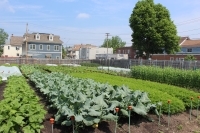
Agriculture Secretary Tom Vilsack selected 12 members to serve on the U.S. Department of Agriculture’s (USDA) inaugural Secretary’s Advisory Committee for Urban Agriculture to provide input on policy development and to help identify barriers to urban agriculture as USDA works to promote urban farming and the economic opportunities it provides in cities across the country.
The new Secretary’s Advisory Committee is part of USDA’s efforts to support urban agriculture, creating a network for feedback. Urban agriculture plays an important role in producing fresh, healthy food in areas where grocery stores are scarce, and also provides jobs and beautifies neighborhoods.
Secretary’s Advisory Committee for Urban Agriculture
The Committee is made up of agricultural producers, and representatives from the areas of higher education or extension programs, non-profits, business and economic development, supply chains and financing.
Members include:
-
Jerry Ann Hebron, Mich., Urban Producer
-
Bobby Wilson, Ga., Urban Producer
-
Viraj Puri, N.Y., Innovative Producer
-
Kaben Smallwood, Okla., Innovative Producer
-
Sally Brown, Wash., Higher Education
-
John Erwin, Md., Higher Education
-
Carl Wallace, Ohio, Non-Profit Representative
-
John Lebeaux, Mass., Business and Economic Development Representative
-
Zachari Curtis, D.C., Supply Chain Experience
-
Allison Paap, Calif., Financing Entity Representative
-
Tara Chadwick, Fla., Related Experience
-
Angela Mason, Ill., Related Experience
USDA and the Office of Urban Agriculture and Innovative Production peer reviewed more than 300 nominees, and Vilsack made the final selections. Selections ensured geographic, racial and gender diversity and a broad range of agricultural experience. The new members will serve terms of one to three years.
The first meeting of this inaugural committee, which will be open to the public, will take place in late February. More details will be available in the Federal Register and at farmers.gov/urban and the new Federal Advisory Committee for Urban Agriculture website.
USDA and Urban Agriculture
The advisory committee and county committees are part of a broad USDA investment in urban agriculture. Other efforts include:
- Grants that target areas of food access, education, business and start-up costs for new farmers, and development of policies related to zoning and other needs of urban production.
- Cooperative agreements that develop and test strategies for planning and implementing municipal compost plans and food waste reduction plans.
- Investing $260,000 for risk management training and crop insurance education for historically underserved and urban producers through partnerships between USDA’s Risk Management Agency(RMA) and the University of Maryland, University of Connecticut, and Michigan State University Center for Regional Food Systems.
- Providing technical and financial assistance through conservation programs offered by USDA’s Natural Resources Conservation Service(NRCS).
- Organizing 11 Farm Service Agency (FSA) urban and suburban county committees. FSA will organize additional committees.
The Office of Urban Agriculture and Innovative Production was established through the 2018 Farm Bill. It is led by NRCS and works in partnership with numerous USDA agencies that support urban agriculture. Its mission is to encourage and promote urban, indoor, and other emerging agricultural practices, including community composting and food waste reduction. More information is available at farmers.gov/urban and the new Federal Advisory Committee for Urban Agriculture website.
Additional resources that may be of interest to urban agriculture entities include grants from USDA’s Agricultural Marketing Service and National Institute of Food and Agriculture as well as FSA loans.
|
|